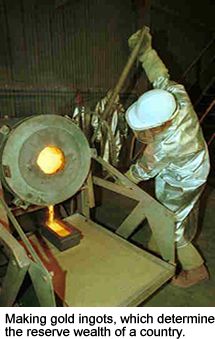BACKGROUND:
Elements and compounds are the building blocks of
minerals. Minerals made of only one element are called NATIVE minerals
(i.e., silver, gold, mercury, copper). Minerals composed of compounds are
simply referred to as minerals (i.e., quartz, which is made up on silicon
and oxygen). To be classified as a mineral, a substance must be:
- INORGANIC - made from nonliving matter,
- NATURALLY MADE -industrial diamonds and so-called
"man-made" minerals are not true minerals,
- CRYSTALLINE - the molecules that make up the
substance are arranged in a set pattern salt, and
- HAVE A DEFINITE CHEMICAL COMPOSITION - no other
chemicals, elements or atoms, can be substituted into the structure.
PROCEDURE:
- There are thousands of known minerals. In everyday language, there are
many references to minerals. Have the students name several of these,
and put them on the board. Here are examples:
- You need vitamins and minerals for a healthy body
- Mineral Oil
- Mineral Bath
- Mineral Spring Water
 Shampoo enriched with minerals Shampoo enriched with minerals- Fortified with minerals
- Natural energy from minerals
- Fortified with vitamins and minerals
- USDA recommended daily amount of vitamins and minerals
- Minerals
are important in everyday life. Have the students compile a list of
minerals and their uses on the board:
diamonds = jewelry
gypsum = used in plaster board
calcite = used in cement
quartz = watches, making glass and many more.
- Instruct students to examine their homes and identify substances that
may contain minerals. Minerals are sometimes difficult to identify. The
following lab centers around those key characteristics that can help
identify minerals. It also discusses how some of those characteristics
make minerals useful specific products in our society.
- Instruct the students to find other uses for minerals by conducting an
Internet search. They will be amazed at how many sites are devoted to
minerals.
|